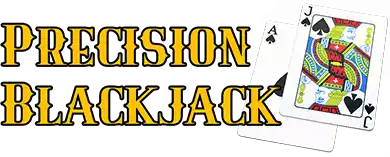The Secret to Splitting Pairs in Blackjack (And When Not To)
The Secret to Splitting Pairs in Blackjack (And When Not To)
The Power of Splitting Pairs
In blackjack, the option to split pairs is one of the most strategic moves you can make. When used correctly, splitting can turn a mediocre hand into two potentially strong ones, giving you double the chance to beat the dealer. But like many aspects of blackjack, knowing when to split—and when not to—can make the difference between walking away with a profit or losing your bet.
In this article, we’ll delve into the art of splitting pairs in blackjack. We’ll explain what it means to split, discuss the scenarios where splitting is advantageous, and highlight the situations where splitting can hurt your chances of winning. By the end, you’ll have a clear understanding of how to use this powerful tactic to maximize your winnings.
What Does It Mean to Split Pairs?
Before we get into the strategy, let’s first define what it means to split pairs in blackjack.
The Basics of Splitting Pairs
When you’re dealt two cards of the same value (e.g., two 8s, two Kings), you have the option to split them into two separate hands. To do this, you must place an additional bet equal to your original wager, effectively doubling your bet. The dealer then separates your pair into two hands and deals an additional card to each.
From there, you play each hand independently, following the same rules as usual—hitting, standing, or even doubling down if the situation calls for it. The idea behind splitting pairs is to maximize your chances of winning by turning a potentially weak hand into two stronger ones.

When to Split Pairs: The Golden Rules
Not all pairs are created equal, and knowing when to split is crucial to making the most of this move. Here are the key situations where splitting pairs is a good idea:
- Always Split Aces
Aces are the most powerful cards in blackjack, and splitting them gives you a strong chance of landing two hands with a total of 21 (if you draw a 10 or a face card). Since an Ace can be worth either 1 or 11, splitting Aces effectively gives you two chances to hit blackjack.
- Why Split Aces: If you’re dealt a pair of Aces, you’re starting with a total of 12, which isn’t a great position. By splitting, you turn that into two hands that each start with an Ace—a much stronger starting point.
- Special Note: Some casinos limit the number of times you can hit after splitting Aces, or they may only allow you to receive one more card per Ace. Despite these restrictions, splitting Aces is almost always the best move.
- Always Split 8s
A pair of 8s adds up to 16, which is one of the worst hands you can have in blackjack. It’s a hand that’s too high to hit comfortably but too low to stand on confidently. Splitting 8s allows you to start two hands with an 8, giving you a much better chance of improving your situation.
- Why Split 8s: Standing on 16 leaves you in a weak position, and hitting on 16 has a high risk of busting. Splitting 8s gives you a fresh start with each hand, increasing your chances of getting a stronger total in both hands.
- Split 2s, 3s, and 7s Against a Weak Dealer Upcard
When you’re dealt a pair of 2s, 3s, or 7s, it’s generally a good idea to split if the dealer’s upcard is weak—typically a 2 through 6. The reasoning is that the dealer is more likely to bust with these upcards, so splitting gives you two hands that can capitalize on the dealer’s weakness.
- Why Split 2s, 3s, and 7s: These pairs don’t start you with a strong hand, but by splitting against a weak dealer upcard, you increase your chances of winning at least one of the two hands. It’s a way to take advantage of the dealer’s potential bust.
- Split 6s Against a Weak Dealer Upcard (3-6)
A pair of 6s totals 12, another difficult hand to play. Splitting 6s can be advantageous when the dealer shows a 3 through 6, as these upcards increase the likelihood that the dealer will bust.
- Why Split 6s: Splitting 6s against a weak upcard allows you to avoid the tricky situation of having a total of 12, which has a high chance of losing. By splitting, you give yourself two opportunities to improve your hands.
- Split 9s Against Dealer’s 2-6, 8, or 9
A pair of 9s adds up to 18, which is a decent hand in blackjack. However, splitting 9s can be a good move if the dealer is showing a weak upcard (2-6) or if the dealer has an 8 or 9.
- Why Split 9s: While 18 is a solid hand, it’s still beatable, especially if the dealer has a 9 or 10-value card showing. Splitting 9s gives you the chance to turn a decent hand into two potentially stronger hands, particularly against a weak dealer upcard.

When Not to Split: Avoiding Costly Mistakes
Just as there are good times to split pairs, there are also situations where splitting is a bad idea. Here’s when you should avoid splitting:
- Never Split 10s (or Face Cards)
A pair of 10s gives you a total of 20, which is one of the strongest hands you can have in blackjack. Splitting 10s is almost never advisable because it turns a sure win into two hands that may not be as strong.
- Why Not Split 10s: Standing on 20 almost guarantees a win, while splitting 10s risks turning a great hand into two weaker hands. Keep the 20 and enjoy the likely win.
- Never Split 5s
A pair of 5s gives you a total of 10, which is an excellent starting point for doubling down. Splitting 5s, however, leaves you with two hands starting at 5—a much weaker position.
- Why Not Split 5s: Doubling down on 10 gives you a great chance of landing a 20. Splitting 5s, on the other hand, leaves you with two hands that are likely to need several hits to become strong. Keep the 10 and double down instead.
- Avoid Splitting 4s
A pair of 4s totals 8, which isn’t a great hand but also isn’t a total loss. Splitting 4s can be tempting, but it often leads to two weak hands that require hitting multiple times.
- Why Not Split 4s: Splitting 4s doesn’t offer much upside. Instead, consider hitting to improve your total or standing if the dealer has a weak upcard.
Practical Tips for Splitting Pairs
Now that you know when to split and when not to, here are some practical tips to help you execute this strategy effectively:
- Practice Makes Perfect
Splitting pairs is a move that can feel counterintuitive at first, especially if you’re new to blackjack. The best way to get comfortable with splitting is to practice in a low-pressure environment. Use online blackjack games or apps to practice different scenarios without risking real money. Over time, you’ll develop the confidence to make the right call at the table.
- Be Mindful of Table Rules
Before you start splitting pairs, make sure you’re familiar with the specific rules of the blackjack table you’re playing at. Some tables may have restrictions on splitting (e.g., only allowing one split per hand) or specific rules about hitting after a split. Knowing these rules ahead of time can prevent costly mistakes.
- Stay Calm and Collected
Splitting pairs can be an exciting move, especially when you’re doubling your bet in the process. However, it’s important to stay calm and focused. Don’t let the thrill of the moment lead you to make impulsive decisions. Stick to the strategy you’ve learned and make your moves with confidence.
- Consider the Long Game
Remember that blackjack is a game of probabilities, and while splitting pairs can improve your chances of winning in the short term, it’s just one part of a larger strategy. Focus on playing consistently and making the best possible decisions over the long run.
Conclusion: Master the Art of Splitting Pairs
Splitting pairs is one of the most powerful tools in a blackjack player’s arsenal. When used correctly, it can turn weak hands into winners and maximize your potential payouts. However, knowing when to split—and when not to—is key to using this strategy effectively.
By following the guidelines outlined in this article, you can master the art of splitting pairs and use it to your advantage at the blackjack table. Whether you’re splitting Aces to go for blackjack or avoiding the temptation to split 10s, these strategies will help you make smarter decisions and increase your chances of walking away a winner.
So the next time you’re dealt a pair in blackjack, you’ll know exactly what to do. Good luck, and may your splits lead to big wins!

